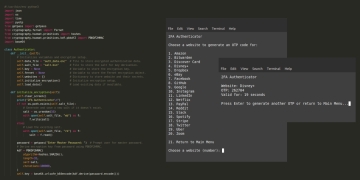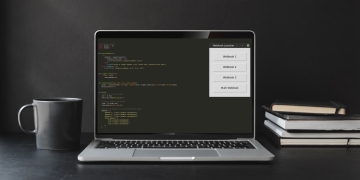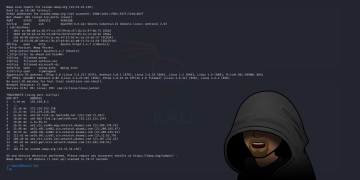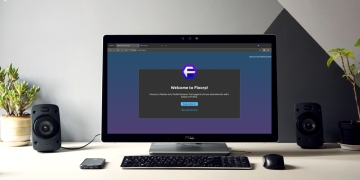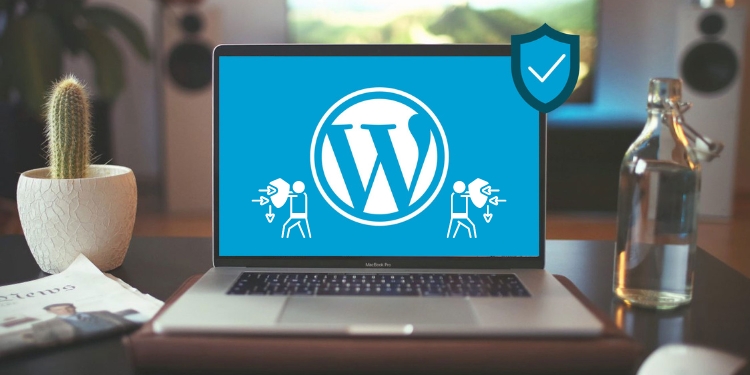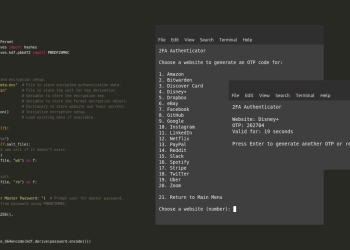Securing your WordPress website is crucial in today's digital landscape. With cyber threats becoming increasingly sophisticated, it's essential to take proactive steps to protect your website, data, and users. In this article, we'll explore ten effective tips and tricks to enhance the security of your WordPress website. By implementing these measures, you can minimize the risk of security breaches, hacking attempts, and data compromises.
1. Keep Your WordPress Core, Themes, and Plugins Updated
Regularly updating your WordPress core, themes, and plugins is one of the simplest yet most effective ways in securing your website. Updates often include bug fixes, security patches, and performance improvements. Outdated software can become a vulnerability that attackers can exploit.
Ensure that you have the latest version of WordPress installed by navigating to your WordPress dashboard and checking for updates. Additionally, update your themes and plugins regularly. Remove any themes or plugins that you no longer use to reduce the attack surface of your website.
For more information on updating WordPress, visit the WordPress documentation.
2. Use Strong and Unique Passwords
Using strong and unique passwords is vital in protecting your WordPress website from brute-force attacks. Avoid common passwords or easily guessable combinations. Instead, create complex passwords that include a mix of uppercase and lowercase letters, numbers, and special characters.
Consider using a password manager, such as LastPass or 1Password, to generate and store your passwords securely. These tools can generate unique, strong passwords for each of your online accounts and remember them for you.
To further enhance password security, enable the built-in WordPress feature that enforces strong passwords for all users. This setting can be found under “Settings” -> “General” in your WordPress dashboard.
For more information on creating strong passwords, check out this helpful guide.
3. Implement Two-Factor Authentication (2FA)
Enabling two-factor authentication (2FA) adds an extra layer of security to your WordPress login process. With 2FA enabled users must provide a second form of verification, such as a unique code generated by a mobile app, in addition to their username and password. This significantly reduces the risk of unauthorized access even if the password is compromised.
To enable 2FA on your WordPress website, you can use plugins such as Google Authenticator or Authy that integrate seamlessly with your website.
For detailed instructions on setting up 2FA for your WordPress website, refer to this comprehensive guide by WPBeginner.
4. Limit Login Attempts
Brute force attacks, where hackers attempt to guess your login credentials, are a common threat to WordPress websites. Limiting the number of login attempts can help thwart such attacks. By implementing a login lockdown feature, you can automatically block IP addresses or user accounts that exceed a certain number of failed login attempts within a specific timeframe.
The Login LockDown plugin is a popular choice for adding this security measure to your WordPress site. It keeps a record of failed login attempts and restricts access temporarily or permanently based on your configuration.
5. Choose a Secure Hosting Provider
Finding a secure website hosting provider is vital for the overall security of your website. A reputable web host will have robust security measures in place, such as firewalls, regular backups, and Intrusion Detection Systems (IDS) These additional layers of protection are beneficial for your overall security.
Proactive monitoring is also crucial for detecting and responding to security incidents in a timely manner. A hosting provider that offers 24/7 security monitoring can quickly identify and address any suspicious activity or potential breaches, minimizing the impact on your website and data.
Also, don't forget to consider the hosting provider's reputation and customer reviews. Look for feedback from other WordPress users to gauge their experience with security, performance, and customer support. Choosing a secure hosting provider sets a strong foundation for your website's security and can save you from potential headaches down the line.
Though there are several options out there for reliable and secure WordPress hosting providers, WP Engine is one of the most popular.
6. Enable SSL Encryption
Securing the transmission of data between your website and its visitors is extremely important for maintaining a safe online environment. One effective way to achieve this is through SSL encryption, which safeguards sensitive information like login credentials and payment details from falling into the wrong hands.
To enable SSL encryption, you'll need to obtain an SSL certificate from a trusted certificate authority (CA) and configure your WordPress site to use HTTPS instead of HTTP. Fortunately, many hosting providers offer free SSL certificates through services like Let's Encrypt, making the process more accessible.
Once you have the SSL certificate, you can install an SSL plugin, such as Really Simple SSL, which automatically configures your site for HTTPS and takes care of necessary redirects. It's also essential to update any internal links on your website to use the HTTPS protocol to ensure a seamless and secure browsing experience.
Implementing SSL not only protects your users' data but also enhances your website's credibility, as visitors feel more confident interacting with a site that displays the padlock icon in the browser's address bar, indicating a secure connection. By adopting SSL encryption, you are demonstrating a commitment to the security and privacy of your users. It not only helps safeguard sensitive information but also improves your site's trustworthiness.
7. Use a Web Application Firewall (WAF)
A Web Application Firewall (WAF) acts as a protective shield between your website and potential threats. It filters incoming web traffic, blocking malicious requests and preventing common attacks such as SQL injection, cross-site scripting (XSS), and distributed denial-of-service (DDoS) attacks.
Adding a WAF to your website adds an extra layer of protection against various types of attacks. WAFs analyze incoming traffic to your site and filter out malicious requests before they reach your WordPress installation, preventing potential vulnerabilities from being exploited.
Plugins like Sucuri and Wordfence offer WAF functionality specifically designed for WordPress websites. These plugins provide a wide range of security features, including firewall protection, malware scanning, and real-time threat intelligence. They can help detect and block suspicious activity, safeguarding your website from common attack vectors.
Implementing a WAF helps ensure that your WordPress website remains secure and protected from emerging threats. It provides an additional layer of defense, reducing the risk of security breaches and unauthorized access.
8. Regularly Back Up Your Website
Regular backups are an essential part of any comprehensive security strategy. In the event of a security breach or a website crash, backups allow you to quickly restore your website to a previous working state. Choose a reliable backup solution that automates the backup process and stores the backups securely, preferably offsite or in the cloud.
Regularly backing up your website ensures that you have a recent copy of your data in case of any unforeseen events. It provides a safety net, allowing you to quickly restore your website to a functional state and minimize any potential downtime or data loss.
Choose a backup solution that meets your needs in terms of automation, storage options, and ease of use. The UpdraftPlus plugin is a popular choice for WordPress websites, offering both free and premium versions. It allows you to schedule automatic backups and store them in various locations, including cloud storage services like Dropbox, Google Drive, and Amazon S3.
Another reliable backup solution is BackupBuddy, which offers features such as complete website backups, offsite storage, and one-click restoration. It also includes options for migrating your website to a new host or domain.
Remember to test your backups periodically to ensure they are functioning correctly and can be restored successfully. Additionally, consider implementing a backup retention policy to manage the storage space occupied by backups and prevent them from accumulating indefinitely.
9. Use Reliable and Secure Plugins
The vast plugin ecosystem is one of WordPress's strengths, but it also introduces potential security risks. Only install plugins from reputable sources, such as the official WordPress Plugin Directory or well-known commercial providers. Keep your plugins updated to benefit from security patches and avoid using outdated or unsupported plugins that may have unpatched vulnerabilities. Regularly review your installed plugins and remove any that are unnecessary or unused.
Before installing a plugin, check its ratings, reviews, and update frequency. Plugins with a high number of active installations, positive reviews, and regular updates are typically more reliable and secure. Be wary of plugins with low ratings or a lack of recent updates, as they may contain security vulnerabilities or be incompatible with the latest versions of WordPress.
Regularly updating your plugins is very important for the benefit of bug fixes and security patches. Outdated or unsupported plugins can become a weak point that hackers can exploit to gain unauthorized access to your website. Enable automatic updates for plugins whenever possible or regularly check for updates within the WordPress Admin Dashboard.
You should regularly review the plugins installed on your website and remove any that are unnecessary or unused. The more plugins you have, the larger the potential attack surface for hackers. Minimizing the number of plugins reduces the risk of vulnerabilities and improves the overall performance and stability of your website.
10. Monitor Your Website's Security
Continuous monitoring of your website's security is essential to detect and respond to potential threats in a timely manner. You should routinely investigate your website's access logs, error logs, and traffic patterns to identify any unusual activity or signs of compromise.
Monitoring your website's security involves monitoring various indicators that can help identify security incidents or vulnerabilities. Access logs provide information about who accessed your website, and in the event of an issue, they allow you to spot suspicious login attempts or unauthorized access. Error logs can reveal any unexpected errors or warning messages that may indicate potential security weaknesses.
Traffic patterns can also provide valuable insights. Sudden spikes in traffic or unusual patterns may indicate malicious activity or attempts to exploit vulnerabilities. Analyzing your website's traffic can help you identify and block suspicious IP addresses or take other preventive measures.
Consider using security plugins that offer monitoring features, such as Sucuri Security and iThemes Security. These plugins can automatically scan your website for malware, monitor file integrity, and send alerts about potential security issues. They can also provide recommendations on improving your website's security.
In Closing
Securing your WordPress website is an ongoing process that requires attention to detail and proactive measures. By following the ten tips and tricks outlined in this article, you can significantly enhance the security of your WordPress website and protect it from potential threats and vulnerabilities.
Remember to keep your WordPress installation, themes, and plugins updated, use strong and unique passwords, and implement two-factor authentication. Limit login attempts, choose a secure hosting provider, and enable SSL encryption. Utilize a web application firewall, regularly back up your website, and use reliable and secure plugins. Finally, monitor your website's security and take firm action to address any issues that arise.
By implementing these security measures, you can safeguard your WordPress website, protect your data, and ensure a safe and trustworthy online experience for your visitors.


